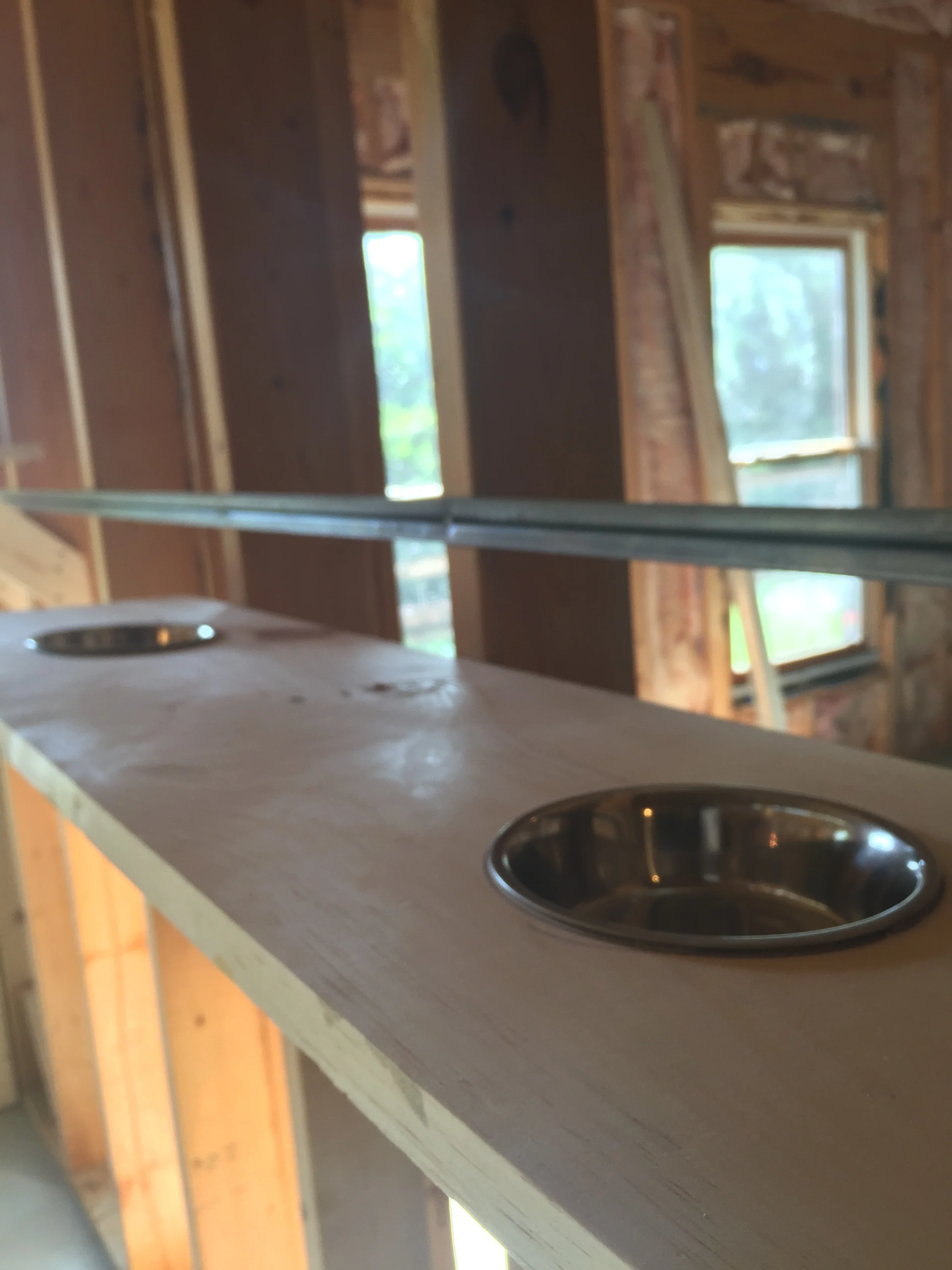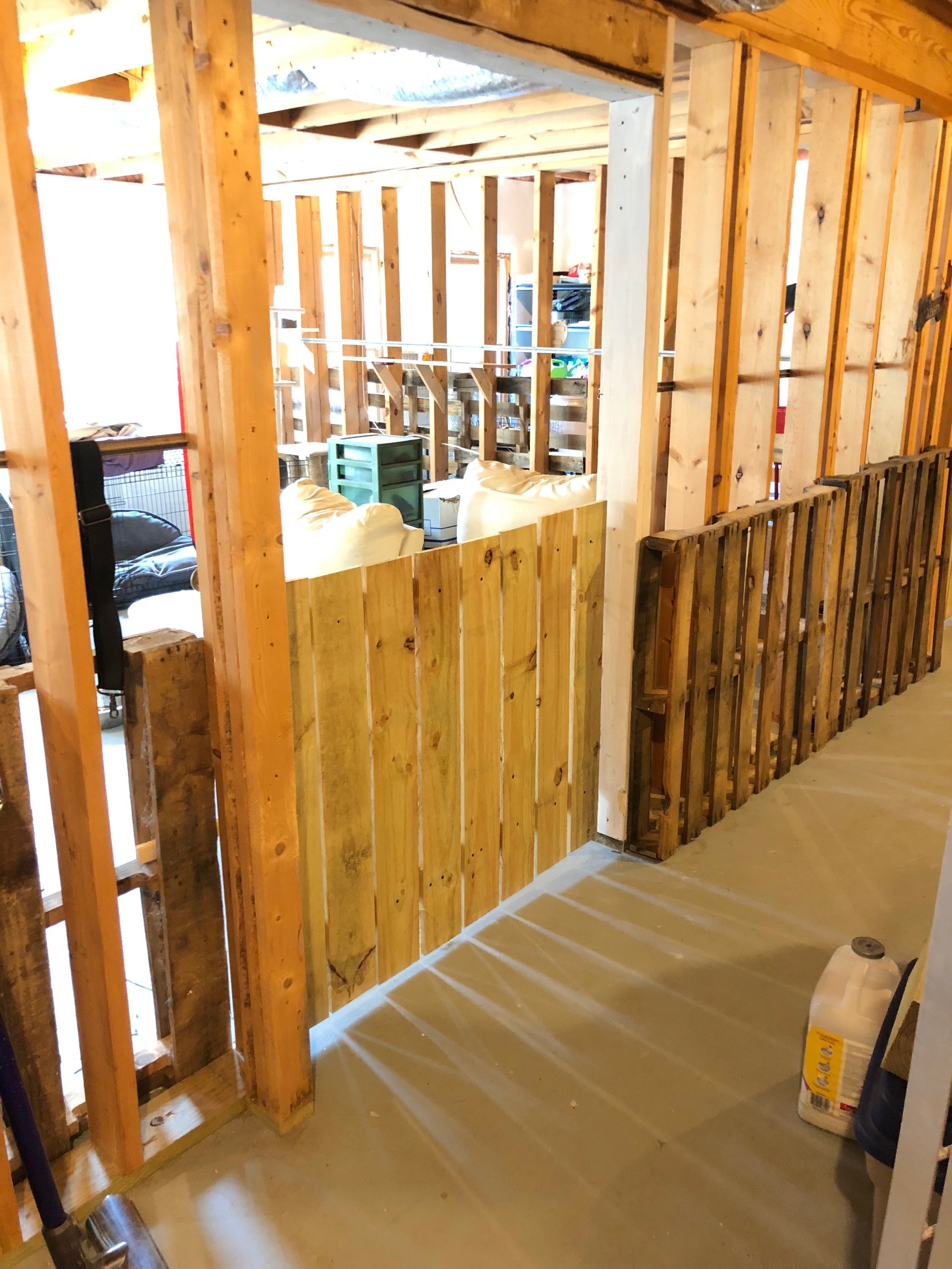I am lucky to live in an area where basements are common. A basement is handy for many reasons, but it has been especially useful for solving my family’s pet-care challenges.
We first decided that we wanted a daylight basement when we were dealing with two cats who were wreaking havoc on our furniture and wall trim. We tried providing a variety of scratching posts, keeping cat claws trimmed or even covered, and countless other solutions that seemed to work for everyone but us. Sadly, our cats were determined to destroy the house in an apparent conspiracy: one was in charge of ensuring that every sofa, chair, curtain, or other soft surface was tattered and frayed, while the other one handled the destruction of wood surfaces such as baseboards and door trim.
When it was time for us to move, an unfinished basement was at the top of our house-hunting priority list. In addition to the cats, we had three dogs. We wanted them to have a damage-resistant area where they could be safe and comfortable if we had to leave them unattended for a few hours. A daylight basement (not to be confused with a cellar, which is typically smaller and has no windows) can be an ideal place to leave dogs and cats when you are not home, assuming that the area has been checked for comfort and safety.
As tempting as it is to convert a basement into extra living space, leaving it at least partly unfinished can be more practical in homes with pets. Concrete floors are a breeze to clean when there’s an accident, and cats can scratch exposed beams to their hearts’ content. Pets are our main reason for leaving the basement unfinished, but it has other benefits: arts and crafts, as well as children’s play, are enhanced by the light streaming between beams rather than being blocked by walls, and bare concrete floors take the stress out of messy activities. The only “finishing” we did was to cover the walls around the perimeter so that the insulation would not be exposed. We happened to have a beat-up old couch from our previous house that was perfect for the new space. As we added heavy-duty shelves, doggie gates, and other improvements, we kept all the surfaces rustic. To keep dogs from entering storage or arts and crafts areas, we created half-walls using old pallets. Any improvements we make in the future will continue to match the unpolished, utilitarian style. We want this to always be a place where no one worries about paint spills or muddy foot/paw prints.
A basement is also a great place to keep smelly or unsightly pet supplies, such as cat litter boxes and bags of dog food. We have designated one area of our basement for all pet-care tasks, including feeding and grooming. Someday we will add a bathroom with a utility sink and a dog-washing tub.
We no longer have our cats (one passed away and the other went to live in our son’s multi-cat household), so we installed a doggie door from the basement to our fenced backyard. Now our dogs can safely go in and out when we are not home.
If you are house-hunting and have pets, and if your area and budget permit, I highly recommend looking for a home with an unfinished daylight basement.
Cat-feeding shelves with recessed bowls are a good way to keep cat food away from dogs. Copyright: Pet-Friendly Planning 2019.
Rustic dog pen with wooden gates and pallet half-walls. Copyright: Pet-Friendly Planning 2019.




